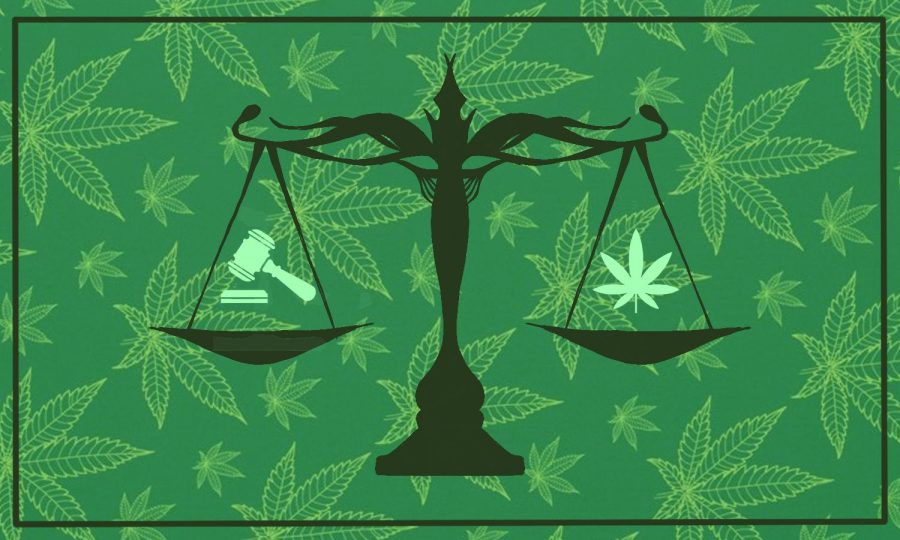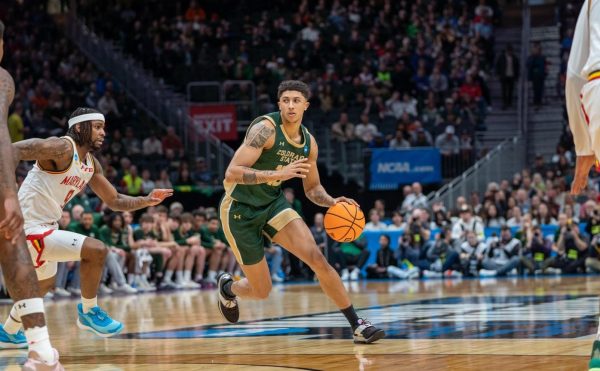NCAA revises cannabis testing rules
Collegian | Trin Bonner
(Graphic Illustration by Trin Bonner | The Collegian)
March 9, 2022
The NCAA’s tolerance for THC has flown out of the park.
The association raised its threshold for a positive THC test last month and is recommending that the divisions change their current penalty structure. The association increased its previous threshold of 35 nanograms of THC per milliliter to 150 nanograms — a difference of more than fourfold.
“Reconsidering the NCAA approach to cannabis testing and management is consistent with feedback from membership on how to better support and educate student-athletes in a society with rapidly evolving public health and cultural views regarding cannabis use,” NCAA Chief Medical Officer Dr. Brian Hainline said in a statement. “Marijuana is not considered a performance-enhancing substance, but it remains important for member schools to engage student-athletes regarding substance use prevention and provide management and support when appropriate.”
The NCAA Committee on Competitive Safeguards and Medical Aspects of Sports recommended that a first positive test for THC result in “no loss of eligibility if the school provides a management plan and education for the student-athlete.”
The second and third tests would carry the same benign penalty as long as the school provides extra education and confirms the student-athlete complied with the initial management and education. If they didn’t, the second and third tests could cost them 25% and 50%, respectively, of regular-season games.
“The health and wellness of our student-athletes is our top priority, and any new changes to NCAA guidelines will always be reviewed thoroughly by our health and wellness staff,” Terry DeZeeuw, Colorado State University senior associate athletic director for health and performance, wrote in an email. “As it relates to this particular change from the NCAA Committee on Competitive Safeguards and Medical Aspects of Sports (CSMAS), we will evaluate and update our institutional policies as necessary.”
This is a huge change from the previous rules, which stated that any first positive test for “illicit drugs” would result in a ban from 50% of regular-season games across all sports, which could continue in perpetuity until a negative test. Forget about the second positive test — that one would cost you an entire calendar year of competition.
In a usual THC urine test, the positive cutoff is typically 50 nanograms of THC per milliliter. The NCAA’s previous cutoff was more stringent at just 35 ng/ml. By more than quadrupling this threshold to 150 ng/ml, the association is creating a new normal wherein student-athletes can use cannabis on occasion without putting their pastime, reputation and even possible future career in jeopardy.
This comes several months after the USA Track & Field team issued a minimum one-month suspension to sprinter Sha’Carri Richardson due to a positive THC test, barring her from competing in the 2020 Tokyo Olympics, which occurred summer 2021. The ensuing debate around athlete cannabis use was so widespread that even President Joe Biden commented at the time, saying, “The rules are the rules, and everybody knows what the rules were going in. … Whether that should remain a rule is a different issue.”
Professional sports leagues have recently made similar changes: Though cannabis is still banned in the NFL and NBA, both leagues have relaxed their testing and formal disciplinary procedures, and the MLB entirely removed cannabis from its banned substance list in 2019.
Reach Hayden Hawley at cannabis@collegian.com or on Twitter @hateonhawley






